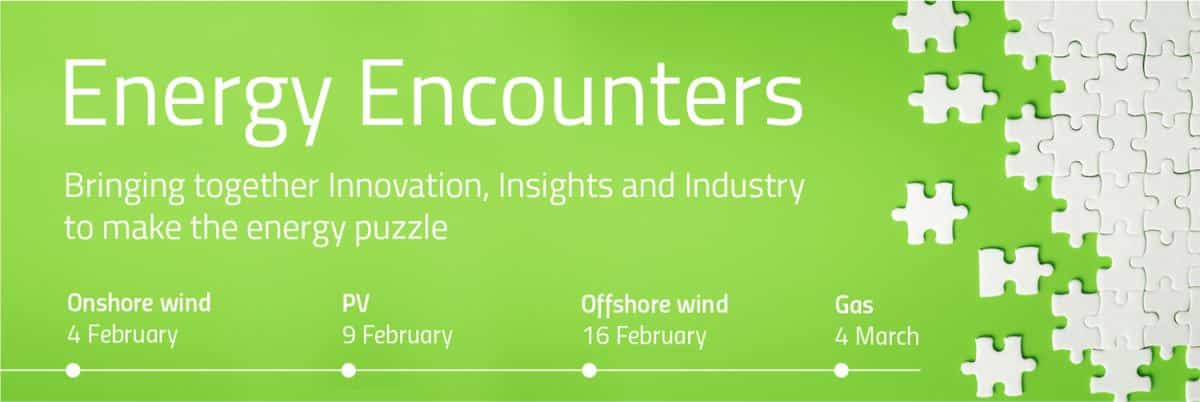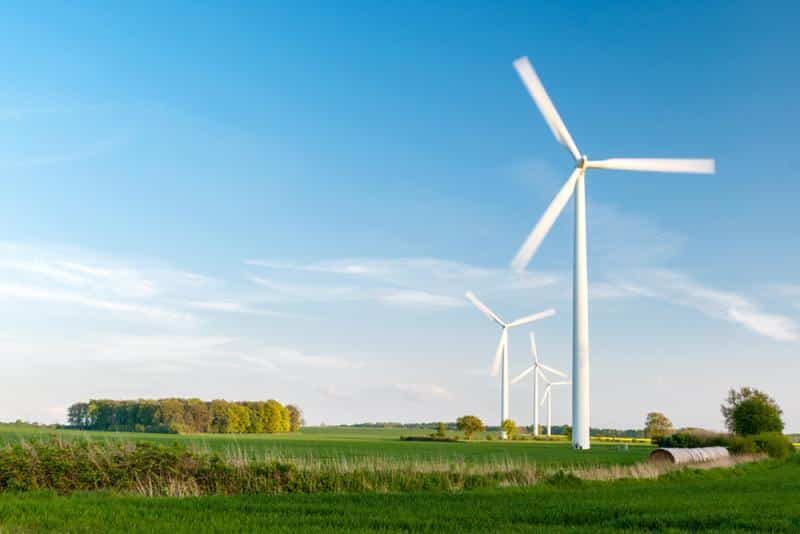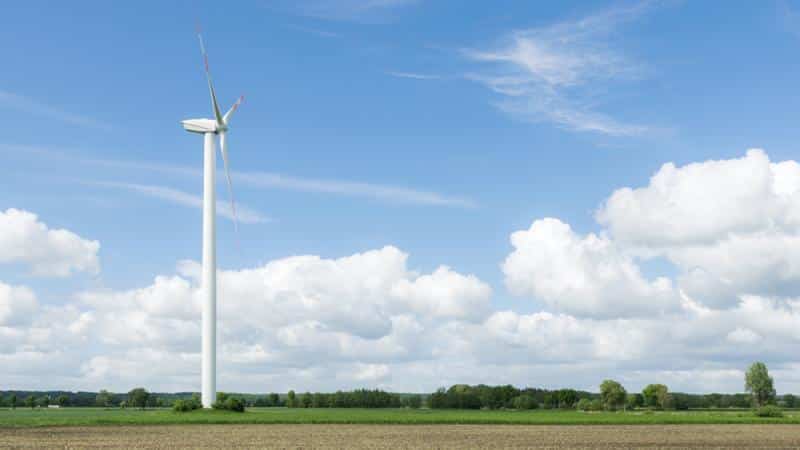Summary – Energy Encounters, session “Onshore wind”

On Wednesday 3 February, we kicked off our series of Energy Encounters with the session on Onshore Wind. This summary will guide you through the most important findings of the session.
Pieter Lodewijks of EnergyVille sets the scene with his introductory presentation on recent results of several EnergyVille studies. As known, the EU ambition is set to reach climate neutrality by 2050. Considering the 2020-targets, we see the EU as a whole is going in the right direction; some member states are on track to reach their renewable targets or even overshoot them. This is, however, not the case for Belgium, where the target has been set at 13%, which is expected not to be reached on time.

Renewables have proven to be resilient in the corona crisis, there is even a modest growth in 2020. Costs for onshore wind have declined by 40% over the last 10 years and it is currently the renewable energy source with the lowest cost of electricity production (LCOE: levelized cost of electricity) in Belgium. With prices expected to decrease even further and with a fast decline of thermal capacity in Belgium and neighboring countries, renewables are expected to increase rapidly (200 GW of which 70 GW onshore wind in NL, DE, FR and UK by 2030).
Amongst various existing barriers, two were highlighted: location limitations and NIMBY. Concerning location limitations, the EnergyVille “BREGILAB” project is investigating the practical realisation of further expansion of renewable electricity sources in Belgium. The project defined the available space and generated an optimal spread of turbines. In this way, the potential in Belgium amounts to 20 GW, almost ninefold the capacity today (2,3 GW).
Concerning NIMBY, reference is made to the yearly survey of VEKA/VREG, where 57% of the respondents claims to have a positive or very positive attitude towards wind turbines in their neighborhood. Also, the accepted distance for these turbines is considerably close.

A complementary pragmatic perspective was presented by Tine Deheegher, Manager Vlaanderen at Eneco Wind Belgium S.A. She highlighted the three big phases in the process of building a wind turbine: development, construction and operation. Considering the first, the biggest gains are to be made in permitting and lead time. Numerous steps in the process depend on this, so the longer permitting takes, the longer the entire development will take with consequences for the construction and operation phases as well. In case of an appeal, there are no set time restrictions in which this appeal must be dealt with. Land-lease agreements may need to be renewed, the market or regulatory conditions have changed, the original business case is no longer viable. Another concern is the growing number of special conditions in the final permit, which results in increasing costs and decreasing chances of a final go ahead of the project. The observation is that over the last 4 years, the time and cost of development have doubled.
The second future challenge and opportunity are repowering. Expected to materialise from 2030 onwards, it is a promising development where a higher output can be reached with fewer turbines. However, also here some challenges and uncertainties remain, as projects would need to go through the entire process again and questions exist around matters as grid capacity and social acceptance for such bigger turbines.
Debate:The encounter continued with a lively debate including following panelists:
- Tine Deheegher, Manager Vlaanderen at Eneco Wind Belgium S.A
- Jan Caerts, CEO at STORM
- Xavier Leblanc, Wind Business Director at EDF Luminus
- Bart De Jong, Head of Network Operations at Elia
- Patrick Reyniers, Program Manager at Fluvius
- Bart Bode, Director VWEA at ODE
In this debate, moderated by Luc Pauwels (VRT), following issues were put on the table as challenges/opportunities:
- The location of wind turbines is one of the challenges. The low hanging fruits have been picked and the required infrastructure is not always present at places interesting from the perspective of wind potential.
- Another, often recurring challenge is NIMBY, on the side of wind turbines, but also on the side of the TSO (so more infrastructure oriented in general). There seems to be a discrepancy between what the surveys say (namely, more than 50% is positive about wind turbines in their neighborhood, and this share only increases when speaking in more general terms) and the realisation time of projects due to appeals. During the discussion, it was put forward that even with a rather high general acceptance; a small opposing minority can impact the duration of the development phase to a large extent. In this context, the number of complaints against operational farms (so when the turbines are in operation), are limited. Also, in this regard shorter lead times and binding times for appeals would be a good thing for all stakeholders, as everyone’s uncertainty diminishes. Wind developers themselves acknowledge that part of the solution is in their hands, by generating more positive PR and advertising their case better. They also see a role for journalists here, in helping put messages forward to policy (for example about the low cost). Special attention should be paid to local news gathering.
- Repowering seems to be a challenge amongst different stakeholders. A statement put on the table was that “bigger is always better”, due to higher efficiency, more full loud hours, etc. Differences concerning allowed capacity exist between the regions. In Wallonia it seems more difficult to build higher capacity turbines. On the other hand, although bigger turbines are allowed in Flanders, a different problem surfaces here. Developers mention it is possible to repower smaller turbines already today, so before their subsidy period has come to an end. This would be advantageous for the government in several ways: 1) the targets are reached faster (due to bigger turbines) and 2) they would be reached more efficiently, as those new turbines would need far less support than the smaller turbines built under the older, more generous subsidy schemes. However, until today this remains impossible under the current regulatory framework.
- Another concern from the developers’ side is that repowering is of course first applied to the oldest turbines and farms, which were built under very different, less strict, legal requirements. It is possible they will not be allowed to repower with a bigger turbine, or not even at the same location because of the current, stricter, policy framework.
- Curtailment was discussed from different perspectives. From the developers’ side it was mentioned that solutions exist to respect and protect nature but that a certain rigidity in the permitting persists, which makes them stop more often than necessary. They point to the fact that loss of production will have to be compensated and that, in terms of CO2, this is not always a better option. Also, from a grid perspective, not everyone is convinced whether it is always needed. The DSO points to the other side of the coin: because of curtailment, more turbines can be connected to the network.
- Circularity is a concern of several participants. The aim is to achieve 100% recyclable turbines. ODE is involved in European working groups on this issue. The blades are the most difficult elements to recycle: it is being researched whether a collaboration with the cement industry would be possible, as they need big amounts of fiber. The infrastructure as such can be used for a long time (40 years or more) but increasing capacity is not always a straightforward procedure.
- Following issues were touched upon as well:
- Optimised maintenance: is done in various ways already by Elia, for example by taking into account the type of materials used in their equipment. They have several monitoring mechanisms for an optimal required maintenance. In a few years, they will take into account weather and wind forecast in this planning.
- Small wind turbines: the preliminary conclusion is that it can be interesting to add small-scale turbines but it can never replace a ‘normal’ turbine. It is complementary in a sense, as part of the solution. However, as the deadline of the renewable targets are approaching fast, it is not considered to be the groundbreaking solution.
- Storage: this would only occur when there is too much wind, storage can take many forms; grid stability and storage are not considered as key limiting factors in the development for the years to come.
The debate was summarised in 3 key messages:
- Permitting is and remains a challenge (duration of development taking too long and having negative effects on the projects).
- Onshore wind is going to grow as it is a cost-effective technology; “the bigger the better” is true for turbines, in this context repowering is a challenge and opportunity.
- A lot of interaction and efforts are needed upfront: with citizens, local authorities, etc. focusing on a positive story.







